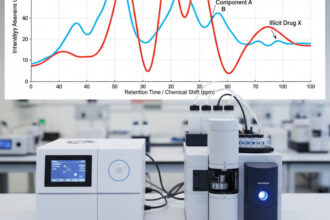Revolutionary Blood Test for Rapid Fentanyl and Opioid Detection
Researchers from the University of Waterloo have developed an innovative blood testing technique that detects opioids, including the highly potent fentanyl, in under three minutes. This breakthrough is a significant step in combating the opioid crisis, offering hope for saving lives in emergency settings.
- Revolutionary Blood Test for Rapid Fentanyl and Opioid Detection
- Swift and Life-Saving Results
- Understanding the Opioid Crisis
- Revolutionary Testing Method
- A Transformative Advancement
- FAQ Section
- 1. Why is rapid opioid detection important?
- 2. What is fentanyl, and why is it so dangerous?
- 3. How does the new testing method work?
- 4. Where can this method be applied?
- 5. How does this compare to traditional methods?
- Conclusion
Swift and Life-Saving Results
Traditional opioid detection methods often require extensive time—a critical drawback in life-threatening emergencies. The new technology, developed by Waterloo’s team, processes up to 96 blood samples in under three minutes, providing results at double the speed of current systems. “The speed of our method can be lifesaving,” notes Dr. Emir Nazdrajić, a postdoctoral researcher in Waterloo’s Department of Chemistry. In emergency rooms where immediate action is required, this method has the potential to be a game-changer.
Understanding the Opioid Crisis
The opioid epidemic has led to a surge in overdose deaths worldwide, with fentanyl—a drug 50 times stronger than heroin—playing a central role. In 2022 alone, over 70,000 fatalities in the United States were attributed to opioid overdoses, with Canada reporting nearly 7,000 deaths annually. British Columbia, in particular, faces a severe public health crisis due to fentanyl misuse.
Revolutionary Testing Method
The breakthrough technique involves placing a small blood sample into a 96-well plate, followed by solid-phase microextraction (SPME) probes that isolate target drugs. Using mass spectrometry, the results are available in just 90 seconds. The study, published in Analytical Chemistry, highlights how this approach can not only detect fentanyl but also identify other drugs and certain diseases. Dr. Janusz Pawliszyn, the study’s lead author, emphasizes the urgent need for such advancements, particularly in clinical and forensic toxicology.
A Transformative Advancement
This rapid testing method is a leap forward in the battle against opioid addiction and overdose deaths. Beyond fentanyl detection, its versatility suggests applications in diagnosing other medical conditions and drugs. By delivering critical results quickly, this innovation has the potential to save countless lives and alleviate the strain on healthcare systems.
FAQ Section
1. Why is rapid opioid detection important?
Rapid detection allows healthcare providers to identify substances in overdose cases swiftly, improving treatment outcomes and potentially saving lives.
2. What is fentanyl, and why is it so dangerous?
Fentanyl is a synthetic opioid up to 50 times more potent than heroin, often leading to fatal overdoses even in minute quantities.
3. How does the new testing method work?
The method uses solid-phase microextraction (SPME) and mass spectrometry to detect drugs in blood samples in approximately 90 seconds.
4. Where can this method be applied?
This technology has applications in emergency medicine, forensic toxicology, and potentially in screening for other diseases.
5. How does this compare to traditional methods?
Traditional methods are slower and less efficient, taking longer to provide results and often requiring more complex processes.
Conclusion
This revolutionary testing method promises to transform opioid detection and treatment in emergency settings. By saving precious time, it offers a lifeline to those affected by the opioid crisis. Could this innovation mark the turning point in tackling one of our time’s most urgent public health challenges?











